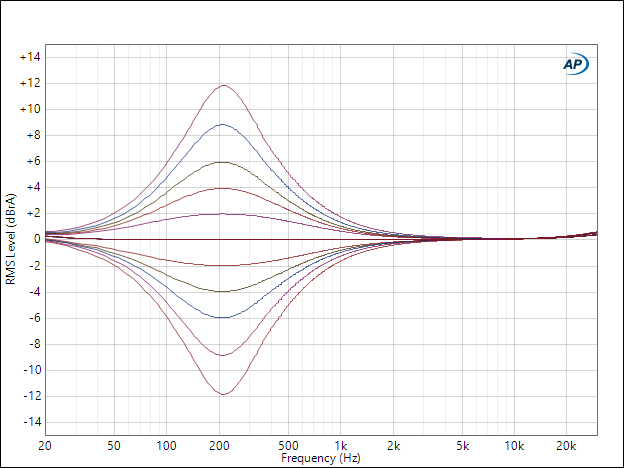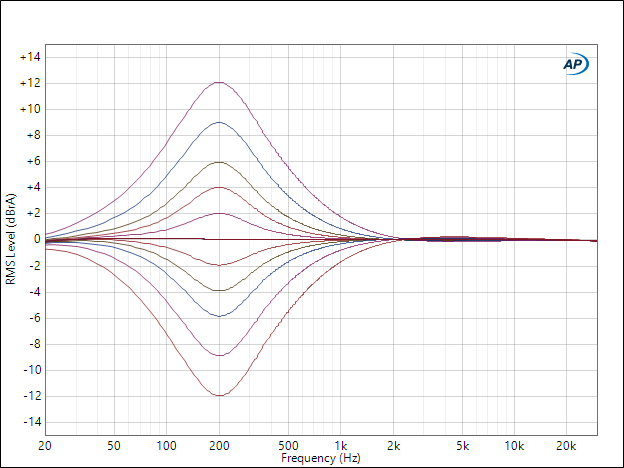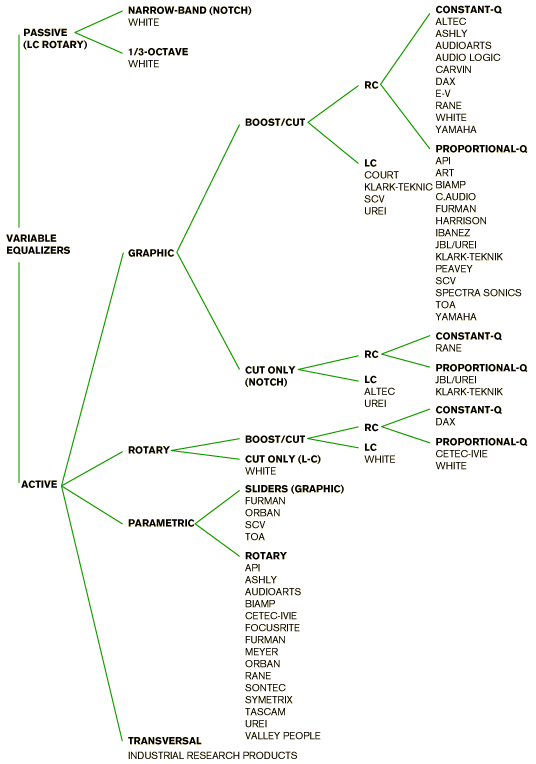People talk about how some equalizers are more musical than others. I recently happened upon an interesting article about API 550 equalizers that got me thinking more about that.
API EQs are known for being musical, or even just a little bit magical. A little bump at just the right frequency and that’s often all you need. Except for the 550A-1 models that is. They sound different.
I wondered what made the A-1 less desirable.
The article discusses the differences between the various API EQ versions that have been built over the years. Here’s a summary:
| Model Number | Frequency Bands | Frequency selections – Lo to Hi | EQ Curve Type |
| API 550 | 3 | 3 5 3 | Proportional Q |
| API 550A | 3 | 5 5 5 | Proportional Q |
| API 550A-1 | 3 | 5 5 5 | Constant Q |
| API 550B | 4 | 7 7 7 7 | Proportional Q |
Looking at this list, one fundamental differences is the A-1 has a Constant Q EQ curve while the others are Proportional Q. So what’s the difference?
Looking at a set of boost/cut curves for proportional Q and then constant Q is a quick way to grasp the difference.
API 550A Proportional Q:

Constant Q:

If you think of the boost cut curves for +- 2dB as a smile on each graph, you’ll note the smile is much much wider on the proportional Q EQ than the constant Q. That must mean it sounds better!
Taking a more technical approach, boosting 2dB @200Hz in proportional Q starts to boost near 20Hz and finishes near 2kHz. That’s .1 x the center frequency to 10 x the center frequency. As you increase the boost or cut, the frequency range remains stable, but the shape of the curve narrows – thus proportional Q.
With constant Q, a boost of 2dB starts closer to 50hZ and finishes at about 800Hz for constant Q. which is .25 to 4x the center frequency. As you increase boost or cut, the range of frequencies increases, but the shape of the curve remains constant – thus constant Q.
Many sought after EQs like Pultec, Langevin and others that were made with indcutors and capacitors (LC) exhibit proportional Q. Conversely, many modern EQs which use resistors and capacitors (RC) are constant Q. People started designing RC EQs to reduce cost as inductors are relatively expensive.
Here’s a nifty graphic that highlights EQs by design and Q type:

Note there are very good EQs that are constant Q; there are lots of uses for constant Q EQs. Parametric EQs are generally constant Q – with wide variations in Q possible. Narrow Q is great to chase down a resonant frequency, but may not be as useful for a gentle nudge on a voice or instrument.